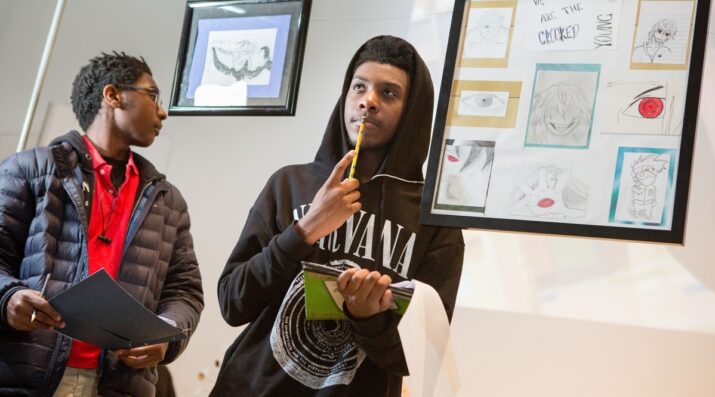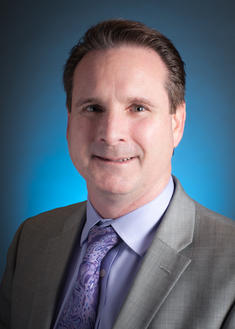New Designs for School
Transforming High School by Challenging Students to Solve Real Problems
Topics

We’ve all had the experience of truly purposeful, authentic learning and know how valuable it is. Educators are taking the best of what we know about learning, student support, effective instruction, and interpersonal skill-building to completely reimagine schools so that students experience that kind of purposeful learning all day, every day.
Vista High School students describe their experience with Challenge-Based Learning, striving to find solutions in their daily lives.
The International Center for Educational Research and Practice (iCERP) promotes intersectionality of thought on a global scale. Nothing is more central to this focus than the transformation of the very fabric of education. We are all experiencing a shift in thinking and action around the learning pathways that students are taking; a shift that includes moving to a student-centered approach to education, where the students step away from their traditional role as recipients of core subject content and move into the driver’s seat of their quest to become flexible, nimble thinkers and learners in an increasingly complex society.
In this series about Vista High School, we place a laser focus on actively engaging student voice at the high school level in various elements of transformation in education. The goal: to hear, first hand, how these changes are affecting the students’ lives as learners and future members of the global workforce.
This post focuses on the creation of a new high school course of study that is intended to challenge students to solve problems locally, regionally, and globally. Craig Gastauer, Lexi Kunz and a set of students share their thoughts about implementing the new Challenge course.
Engaging Authentic Student Voice
From Craig Gastauer
At Vista High School, we are striving to transform the learning experiences for our students. To achieve this shift, we are committed to increasingly place students at the center of the design of their learning experiences where they leverage growing strengths, interests, passions, and ideas in order to engage in authentic problems and challenges. Central to this transformation is the development of what Kallick and Zmuda (2017) describe as the “Four Attributes of Personalized Learning:” Voice, Co-creation, Social Construction, and Self-Discovery. In order for our students to have a hand in developing aspects of their learning experiences, we must help them learn to develop the skills and dispositions associated with these attributes.
In this post, Lexi Kunz introduces the big idea behind one of our new courses. In this course, we aim to help students build a mental framework that will assist them as they work to solve the challenges they encounter in their world. Teachers develop opportunities in which students discover that their thoughts and ideas have power. This is the essence of building student voice. Additionally, six of our students describe the importance of directing their efforts to impact an authentic audience. Our students clearly recognize the difference in their motivation when their efforts are truly intended to make a difference in their own lives and the lives of others.
Challenge Course
From Lexi Kunz
Freshmen at Vista High School were introduced to a new course in fall of 2017. In its second year this aptly named “Challenge” course has strived to help students build empathy by increasing their awareness of local and global issues and develop as global citizens through proficiency of the Challenge Based Learning (CBL) Framework. Key to CBL is the role of student voice. Students become more deeply engaged in making choices about their learning.
Naturally, students strive to find solutions in their daily lives. They want answers to their concrete questions. Ample creativity pours from students who are less jaded and less weary than adults. They believe in possibility and when we allow them the space to create solutions to issues they face, students will rise to the task and amaze us.
Engage, Investigate, Act
From students Cassandra Hayes, Anne Tufo, Layla Achmore, Isabella Chumley, and Christina Cruz
We want our voices to be heard. In our Challenge course, we are able to do this. There are many times when we students feel we can’t do anything to help out our school and community. The best thing about Challenge is it allows us to try to fix and spread awareness about problems that many people in our community or even around the world face. We are able to take global issues, connect them to our learning, and educate people around us about it.
The process we use in Challenge is unique and helps us to create the best project possible. The first phase to designing a project is “Engage.” In this we ask any questions we have on the topic. The second phase is “Investigate.” We try and answer all the questions we came up with and find credible sources. The last phase is “Act.” This is the part where we are able to do something to impact a specific group or community. We must address a real audience and actually make something happen.
How we describe it in Challenge is this isn't just a one-time thing. This solution you have created should be long lasting and make an impact in more than just one person’s life. Focusing on an authentic audience makes us grow empathy about the user and gives us a different perspective. During one of our challenges, we faced a tough situation of getting our voices heard. The adults we were collaborating with to create a section in our school’s web page for incoming students were not in favor of adding student-generated information to the website. They didn’t realize it was not being developed as “just an assignment” for the class. We contacted staff members, counselors, and teachers to try and get our ideas across to a proper audience. We benefited by understanding that we will be confronted by problems as we attempt to act on our learning. Through these challenges, we need to identify and utilize resources that will help us get our message out.
Real-Life Experiences
From student Lily Chmura
Challenge class allows us to get real-life experiences. We are able to leave the classroom to complete assignments, unlike a traditional classroom where the student is stuck at a desk usually listening to a teacher lecture while getting really bored. In Challenge class, we are given a task and are allowed to search out the answers on our own whether it be throughout campus or outside of school. I have a learning disability which makes it difficult for me to learn in a regular class. But in Challenge class, the opportunities for different ways of learning help me understand better because I can actually go out and learn things on my own. One of our first projects was going around campus and trying to find random objects on a card. These types of tasks are valuable and it allowed us to meet different people that we wouldn't normally meet in the classroom. It challenged us to get out of our comfort zones. These are skills that will be very important and useful as we get older and enter the workforce.
Read more student perspectives on the learning transformation at Vista High School:
- Creating an environment of wellness
- Challenging students to solve real problems
- Supporting student self-discovery
- Challenging students to take action based on their learning
- Engaging student autonomy
Top photo courtesy of Allison Shelley/The Verbatim Agency for American Education: Images of Teachers and Students in Action




